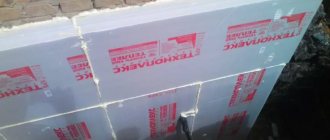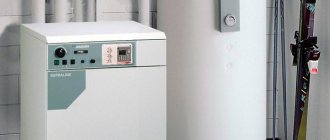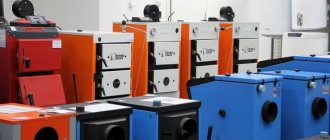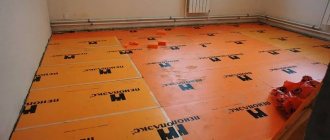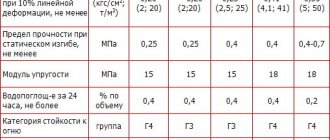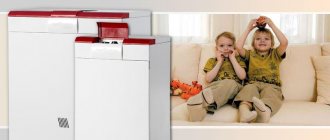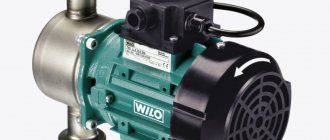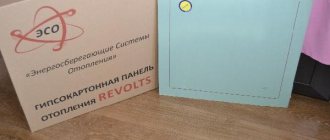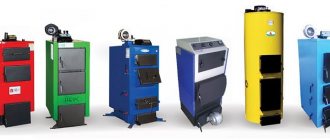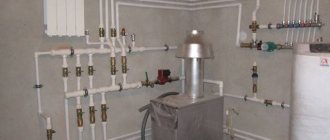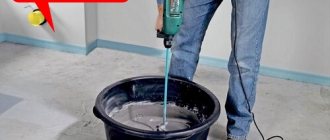The construction market is filled with many types of insulation materials. They come in rolls, slabs, backfill and sprayed. Since the assortment is very large, it can be difficult to make the right and informed choice. What can I say if there are more than 6 types of foam materials alone? We are talking about Ravaterm, Polyspen, Stirex, Penofol, Penoplex and Technoplex. The materials are used for internal and external insulation. Which material is better? To do this, you need to understand the features of each material, its advantages and disadvantages. Most experts recommend using Penoplex or Technoplex.
Why are they so good? Technoplex or Penoplex, which is better? What if you compare them with other materials? This is exactly what we will do.
Comparing expanded polystyrene foam with other insulation materials
The main competitor for such materials are felt and fiber insulation. Some prefer to use mineral wool, others prefer Technoplex or Penoplex. Which is better, penoplex or mineral wool for insulation? Each of the materials has its own positive and negative properties. In the photo below you can see the features of expanded polystyrene foam.
Like mineral wool, they are durable, safe and environmentally friendly. True, the thermal insulation qualities and moisture absorption of mineral wool are worse.
Private one- and two-story premises are best treated with Penoplex. It is much more effective. Mineral wool is used for finishing high-rise buildings. The fact is that it does not burn at all. Fire retardant additives will not be able to protect EPPS 100%; mineral wool is better in this regard. However, it is not recommended to use it in damp and damp areas.
Another competitor for EPPS is isolon. This is insulation made from foamed and modified polyethylene. Some people ask, Izolon or Penoplex, which is better? Izolon is suitable for insulating internal walls and ceilings of a building. And the thermal conductivity coefficients of the materials are almost the same. Izolon can withstand heating up to 80 degrees Celsius throughout the day. The material has excellent sound and noise insulation. It is safe and environmentally friendly. When heated, it will not emit harmful substances. The main disadvantage is the softness and flexibility of Izolon. When laying it on the wall, it requires fixing with sheets of plasterboard or MDF boards. You cannot glue wallpaper or plaster on Izolon. This is why it is recommended to use it in conjunction with EPS insulation.
You can also find the following queries on the Internet: Ravaterm or Penoplex, which is better, Polyspen or Penoplex, which is better, or Stirex or Penoplex, which is better. It is impossible to answer the question unequivocally. All of them belong to XPS and have almost identical characteristics. The difference is the price and some additional nuances.
What can replace technoplex: photos of the material and its analogues
Despite all its advantages, Technoplex is not the only insulation on the domestic market. Thanks to the wide range of products, you can find something to replace it with if you compare it with other materials.
The scope of application of penoplex includes individual and industrial construction
Most companies on the market offer thermal insulation materials that are similar in properties to slabs produced.
The most popular analogues of technoplex are:
- Ursa is a group of insulation materials made from fiberglass;
- Stirex is a high-quality insulating material, similar in characteristics to technoplex:
- Polyspen - is not afraid of fire and contains additives that help extinguish the flame;
- Primaplex is a high-quality, popular blue insulator;
- Penoplex is the main competitor of technoplex, which often replaces it;
- Thermite is a heat insulator that is not afraid of combustion, since Thermit has the highest flammability class G1;
- Carbon is another TechnoNIKOL product that is actively used in industrial and private construction;
- Epps is a fairly common thermal insulator with high-quality characteristics, painted in different colors: orange, blue, yellow, white and gray;
- Bateplex is a high-quality, high-performance analogue of technoplex.
Similar characteristics of insulation from different companies are explained by the use of the same material - extruded polystyrene foam. Therefore, by choosing products from any of the above companies, you can be sure that the thermal insulation will not let you down.
Why is it necessary to do a vapor barrier when insulating with polystyrene foam?
Since the air humidity inside the building is higher than outside, steam moves from an area where there is more of it (high pressure) to an area where there is less of it (low pressure). When it passes through a wall or insulation, along its path it can hit the dew point (the point at which the temperature of the wall corresponds to the value at which steam begins to condense, approximately 13-17 ° C).
When condensation occurs a short distance from the outer surface, this is normal. But when the dew point moves inside the structure, the wall freezes, and moisture gradually permeates the structure until it reaches the inner surface. This way the wall gets wet.
To avoid this, you must:
- move the dew point outward of the wall. This can be achieved by insulating the walls from the outside, in which case a vapor barrier will not be needed; to prevent moisture from penetrating inside the structure when the dew point is closer to the inner surface, a vapor barrier is installed.
Dimensions, thickness and cost
The stability of thermal insulation parameters allows the use of slabs of medium thickness from 35 to 50 mm.
This is average for a typical solution in a temperate climate.
The increased thickness of penoplex up to 70 mm is most used in the northern regions, where the temperature often drops to 0 C. This approach is justified, especially since the average thickness of the remaining insulation reaches mm.
The dimensions of the slabs are standardized by the manufacturer to the usual mm in length and mm in width.
Compared to other types of insulation, the cost of penoplex is quite high: the cost of 1 square meter of sheet is on average $5. If modified with improved properties, including fire retardant additives, then the cost will be $ per 1 sq.m.
Advantages of sprayed insulation
This insulation material has a number of priority advantages, successfully competing with any roll and slab thermal insulators.
A feature of sprayed insulation is the simplicity of the insulation process. For this purpose, a high-pressure cylinder unit is used, through which two structural components are sprayed and, when combined, form polyurethane foam.
Many people have probably seen a similar material like this when using polyurethane foam to insulate window openings. Sprayed wall insulation looks similar.
Sprayed insulation is quite light in weight and can be applied to a surface of any material in a layer of any thickness without consequences.
General installation information
Penoplex is quite easy to work with, but there are a number of aspects that need to be taken into account during installation in order to do everything correctly. So, as for the method of fastening, the slabs need to be fixed using the method that is most suitable for a specific element of the structure. For example, if the base or foundation is insulated, that is, that part of the building that is located below the upper boundary of the soil, then the material can be glued and then pressed down with soil. If Penoplex is used to insulate floors, then it is best to simply put it under the screed - there is no need for any fixation. But on the walls, the material must first be glued, and then additionally fixed with special disc-shaped dowels with a wide head. Sometimes Penoplex is also attached to the sheathing.
Penoplex board insulation
For adhesive fixation, a special composition Penoplex FastFix is used. It is applied to the surface of the slabs evenly in stripes around the perimeter, retreating from the edge of the slab about 1-3 cm, as well as in the middle of the slab. It is recommended to make the slab slightly rough by making notches or treating it before applying the glue. This will improve grip. The glue consumption is as follows: one bottle is enough for about 100 meters of linear seams, that is, it can glue about 10 m2 of insulation.
As for dowels, it is better to take synthetic ones with low thermal conductivity to avoid the appearance of cold bridges. The holes for them need to be drilled so that they are approximately 1-1.5 cm longer than the length of the dowel being driven in. As for fixing the material on concrete, in this case the minimum length of the spacer part of the fastener should be at least 4.5 cm, and for brick even longer - 6-9 cm. For foam concrete, it is better to select longer dowels, at least 10-12 cm.
Fastening Penoplex with umbrella dowels
Prices for dowels for fastening insulation
Dowel umbrella
As for the thickness of the insulation, we remember that it can be different. This parameter must be determined taking into account the climatic characteristics of the region and the purpose of the building structure, as well as the materials from which it is constructed. The easiest way to find out the optimal thickness in each specific case is to use a special calculator on the Penoplex website. It will also help identify the required number of slabs.
Installation of Penoplex sheets
4 Vapor barrier floor screed
The situation with floors is ambiguous and depends on environmental conditions. So, a screed on a balcony or loggia should be protected with a vapor barrier, but special conditions arise there.
Interfloor ceilings do not need to be protected from the floor side. Several factors have an influence here.
Firstly, the technology of installing foam plastic on the floor itself makes it possible to fit and insulate it well. Secondly, the screed must be waterproofed, and the waterproofing layer also helps protect against steam.
And you should understand that the load on the floors is very small, since according to the laws of physics, warm air and steam always tends upward. Below, it does not linger, being replaced by colder air.
Ceiling insulated with polystyrene foam boards
Again, all exceptions are the finishing of floors above a bathtub, bathhouse, etc. Here the amount of steam can reach critical levels and even pass through concrete interfloor ceilings.
Penoplex sheets
Penoplex is afraid of exposure to ultraviolet radiation. Therefore, it cannot be used without coating for cladding the outside of a house. But he is well versed in various chemicals. It is not afraid of antiseptics, tolerates bitumen-based mixtures well, and does not react to cement. But poor adhesion of the top layer makes it difficult for anything to stick to the foam sheets.
Penoplex does not tolerate contact with any solvents. Keep it away from paint thinners, solvents such as acetone and ethyl acetate, and coal tar (and all its derivatives).
Penoplex sheets produced by industry have a width of 600 mm, a length of 1200 mm or 2400 mm, and a thickness of 40, 60, 80 mm. Custom sizes are also available for sale. Penoplex prices are usually low, but there are sellers who break market habits.
The nuances of using foam plastic
Among the wide variety of modern materials, insulation of walls, floors and roof structures with cast foam is a fairly popular procedure. The distinctive feature that sets this procedure apart from others is that there is no need to prepare the surface for these purposes. Transportation of equipment and raw materials to the construction site is carried out by car. The necessary conditions for the facility are the availability of a source of water and electricity.
Direct filling is carried out using a hose, the diameter of which should be 3.0 cm. With its participation, filling can be carried out even in the most remote and hard-to-reach places. The insulation is quite dense and of high quality. It is permissible to apply foam material to an insulated surface.
Insulating walls with this material can be applied to any surface, which will not affect the quality of the work at all. This kind of insulation is also good for filling voids with irregular geometry.
Insulation of walls with foam plastic
The procedure is carried out by pouring it into the space between two walls (external and internal). There are 3 use cases for this technology:
- Pouring into the interwall space of a house in use. This procedure is performed when there is a gap of about 3-5 cm between the surfaces. Holes with d 3.2 cm are formed in the surface in a staggered arrangement and with a distance of 1-2 mm. Then pour the solution under pressure through each hole until it is visible in the hole next to it.
- Pouring into the interwall space of a house under construction. Here the cavity is filled with a solution in several layers. Each layer is no more than 3 meters.
- Filling between false partitions and walls. A false partition can be a finishing coating made of plasterboard, corrugated board, siding, plastic and others. Frame houses are insulated in the same way.
Floor insulation is carried out in the following sequence:
- Holes (diameter approximately 26 mm) are drilled through the boards.
- Through the holes, the internal cavity under the floor is filled with a liquid composition.
- Any foam that comes out is removed.
It is relatively inexpensive and has a sufficient number of advantages in relation to other insulating materials. This modern heat insulator is distinguished by its low weight, simple installation and long shelf life. Thermal insulation of apartments and houses with foam insulation allows you to save the family budget when paying for heating.
Installation technology of polystyrene insulation boards
Insulation of external, internal walls and other structures using extruded polystyrene is carried out in several stages. Let's look at each of them:
- The preparatory stage consists of preparing the walls for insulation, cleaning them from dirt, dust, old finishing materials, and paint coatings. In case of large unevenness, it is recommended to level the surface using a plaster mixture (and other methods depending on the design) and treat it with an antifungal compound.
- Fixation using special adhesive facade compounds . The adhesive is applied directly to the insulating board using a comb.
- Mechanical fastening is done using dowels.
- Installation of facade mesh . For better adhesion of the glue to the insulation, you can create roughness on the surface of the slabs. The first plaster layer of façade adhesive is used to fix the reinforcing polymer mesh. Next, a second layer of plaster is applied, after which has dried, the walls are covered with decorative plaster (optional) and painted.
- Instead of plaster, it is possible to decorate the walls with siding, wood, as well as the use of ventilated facades.
EPS installation technology
Thermal insulation of roofs is carried out either at the construction stage or during the reconstruction process, for example, when converting a cold attic into a living space. In this case, the insulation is laid on the base in several layers (the joints of the top layer should not coincide with the joints of the bottom). Next, a vapor-permeable membrane is spread over the penoplex. The resulting cake is secured with longitudinal slats with a thickness of at least 40 mm to ensure ventilation between the insulation and the roofing material.
Thermal insulation of flat roofs
Flat roofs are usually insulated with polystyrene foam due to its resistance to mechanical stress.
The material is also applicable to pitched roof types, but for them experts often recommend the use of fiber insulation. Mineral wool and glass wool better fill the under-roof space, which eliminates the appearance of cold bridges.
Preparatory work and waterproofing
Before installing thermal insulation, it is necessary to prepare the insulated surface. It should be dry and clean. The old backfill is removed. Then the waterproofing film is laid.
This is necessary to ensure that moisture does not accumulate between the insulation and the roof, which can lead to mold, rotting of wooden structures and corrosion of metal elements.
It is important to install the film so that there is a gap of 2 cm between it and the sheathing to remove moisture
Installation of insulation
Foam boards are laid on top of the waterproofing. They can be secured using glue, liquid nails, anchors, dowels, or flooring. For additional reliability, mounting in several ways is possible.
When laying insulation, care must be taken to ensure that there are no voids and that the slabs are tightly adjacent to each other.
The resulting cracks must be filled with foam.
Covering with geotextile material and gravel
Geotextiles are laid on top of foam boards. It protects the roof from the negative effects of the sun and reduces the effect of mechanical loads. As a result, the service life of the roof is increased.
Following the geotextile is backfilling with gravel, the fraction of which is 16/32. The thickness of the layer should be at least 5 cm. A cement-sand screed is made on top of the gravel.
What is this. History of the creation of the material
The material first appeared back in 1941, when the DOW CHEMICAL company (USA) patented a fundamentally new product with high thermal insulation properties and moisture resistance. The production of the material was put on stream, but initially it was manufactured only for the needs of the Navy. Due to its resistance to humid environments, Penoplex was used for the production of life rafts. After some time, the material began to be used in refrigeration units. Penoplex occupied its rightful niche only in 1950, when it began to be used in construction.
It is curious that in the US construction market the material is known under the brand name STROYFOAM. Penoplex is a Russian brand that appeared only in 1988. What is Penoplex? Essentially, it is foamed polystyrene, which is produced on extrusion machines. In its structure, the material resembles polystyrene foam, which is familiar to many, but has a denser structure and, accordingly, better characteristics.
Disadvantages of polystyrene foam as insulation
The question often arises: is it possible to insulate a roof with foam plastic? Polystyrene vapors are toxic, but the finished material does not emit harmful substances. Expanded polystyrene boards can pose some danger when melted under the influence of an open flame. But it is worth noting that self-extinguishing foam is used to insulate residential buildings - it does not support combustion and is a fireproof material.
To insulate pitched roofs, sheets of expanded polystyrene can be used, but in terms of functionality they are inferior to cotton wool insulation: rigid slabs of polymer material cannot always tightly fill the space between structures, as a result of which cold bridges form and moisture condenses in places where there are voids
. Treating joints with construction foam or sealant does not guarantee 100% protection. Condensation causes destruction of wooden structures and metal fasteners.
The soundproofing qualities of polystyrene foam are rated quite highly, but it is not entirely suitable for thermal insulation of “noisy” metal roofs, since it dampens sound worse than cotton insulation.
What to choose
If we compare these two insulation materials, then Technoplex is more technologically advanced and has better qualities, but the difference between it and Penoplex is so insignificant that it is impossible to say for sure which one should be chosen.
By choosing polystyrene foam insulation, regardless of whether it is Technoplex or Penoplex, you can get not only thermal insulation, but also sound and vapor barrier.
However, it is worth remembering that polystyrene foam is still a chemical insulation, not a natural one. Therefore, when burned, it releases very caustic substances.
Modern technologies do not stand still, and today liquid foam has become widespread. Details here: https://teplo.guru/uteplenie/utepliteli/zhidkiy-penoplast.html
Peculiarities
Expanded polystyrene is a universal heat insulator endowed with unique properties.
Advantages
The positive qualities of the material include the following:
- durability and strength (with high-quality installation it will last at least 50 years, does not crumble, does not rot, does not decompose);
- low thermal conductivity;
- high thermal insulation (a 10 cm thick slab has the same thermal insulation properties as one and a half meter brickwork);
- moisture resistance (the material absorbs no more than 6% of moisture and retains more than 90% of its properties);
- resistance to temperature changes, ultraviolet radiation, chemical and biological influences (mold and mildew do not form on it);
- frost resistance (withstands up to 50 freezing/thawing cycles and does not lose its physical and chemical characteristics);
- environmental friendliness (it is even used for food storage);
- fire safety (modern types of polystyrene do not support the combustion process, as they have been treated with fire retardants);
- simple installation technology (no need to purchase expensive tools, the material is lightweight and easy to cut);
- low cost.
Due to its high moisture resistance, expanded polystyrene does not require additional hydro- and vapor barrier. Unlike its main rival in the field of mineral wool insulation, polystyrene foam does not generate dust during installation, so no protective equipment (respirator, gloves, special clothing) is required to work with it.
Flaws
Expanded polystyrene is spoiled by rodents, they make moves in it. To protect the house from them, even at the cladding stage, poison in the form of grains or special capsules can be laid around the perimeter of the building, between the insulation layer and the cladding material.
This will be enough for a while. And, of course, you definitely need to install a base profile.
Today, customers are offered several brands of expanded polystyrene. They differ in production method and technical characteristics.
Pressed polystyrene
Domestic material, produced under the brands PS-1 or PS-4.
It has a high density (60-600 kg/m3). Its area of application is radio engineering.
Pressless material
PSB, PSB-S – brands of expanded polystyrene from Russian manufacturers. The material has high physical and chemical properties. Its scope of application is facade insulation.
Pressed and non-pressed materials have one common drawback: at low temperatures, when moisture gets between the granules, they will begin to collapse.
Extrusion insulation
This type of expanded polystyrene is most often used for thermal insulation of facades. It is very durable and strong, its service life reaches 80 years.
But unlike pressless material, it has a significant drawback: it contains residual styrene, which is harmful to health.
Domestic brands of extrusion insulation are “Penoplex”, “TechnoNIKOL”.
Types and what are their differences
Penoplex is a universal material that is used for thermal insulation of various structures. Manufacturers produce several product lines to make it easier for consumers to choose the right material.
Wall
Penoplex Wall is designed for thermal insulation of internal and external structures. Insulating exterior walls is more effective and helps reduce heating costs. This type is also suitable for thermal insulation of partitions and facade systems. A distinctive feature of the slabs is the presence of stripes on the surface, applied with a milling cutter. The rough surface improves the adhesive properties of the insulation, resulting in strong adhesion to the base.
Foundation
Foundations, floors, house paths, and plinths are insulated with Penoplex Foundation material. Its distinctive feature is its high strength, which allows the use of insulation for floors and other structures where there are requirements to withstand significant loads. The slabs have a low moisture absorption coefficient, which is useful because this quality allows you to reliably protect the basement and foundation of the house.
Read also: Stages of diagnosis and treatment of enuresis
Roof
Extruded polystyrene foam for thermal insulation of flat and pitched roofs has high heat-saving qualities. Recently, the manufacturer has been producing a universal version of Penoplex Roofing and a specialized Penoplex Pitched Roofing, characterized by a longer length and a special tongue-and-groove fastening system.
Slope
Special elements for creating slope and counter-slope structures on roofs, parapets and other protruding structures are presented in the Penoplex Slope line. These extruded polystyrene foam elements have different widths on two sides and provide the required angle.
Block
Penoplex Block consists of several glued polystyrene foam boards.
The increased thickness allows the material to withstand high loads, which is why it is used in road construction.
Comfort
Penoplex Comfort is in demand among consumers. For mansions (balconies, loggias, extensions) and city apartments, this is the most common option, which has important heat-saving characteristics, high reliability, strength and durability. At the same time, the cost of this line is in the average price range. Has an L-shaped edge to prevent the formation of cold bridges.
GEO
Penoplex GEO is an alternative to extruded polystyrene foam for foundations, floors, blind areas and other structures that are subject to heavy loads. Unlike the Foundation line, GEO has greater compressive strength and is more often used in professional construction.
The basis
Penoplex Base has sufficient compressive strength and is considered a universal heat insulator, as it can be used for walls, floors, roofs, provided there are no heavy loads. In all respects, this line is close to Penoplex Comfort, but the Base is more often used in professional construction, and Comfort in domestic construction.
Facade
An improved option for walls, which can be used for insulation outside, inside, and also be part of facade systems. Penoplex Facade has characteristics similar to the Wall line. It has an L-shaped edge, which guarantees the absence of through seams.
Adhesive selection parameters
Insulation is produced in the form of slabs of various sizes. The scope of application of the material is extremely wide. It is used for thermal insulation of walls, ceilings, floors, as well as for insulation of roofs, facades and even foundations.
Take a closer look at the video:
In order to choose the right way to glue penoplex, you need to take into account several parameters:
frost resistance of the composition is an important characteristic of the adhesive when it comes to outdoor work; the adhesive properties of the composition must correspond to the characteristics of the insulated surface. Cement adhesive for penoplex has the highest adhesion; in rooms where the finishing should also perform a moisture-proof function, it is advisable to use compounds with a waterproofing function
Cement mixtures serve much less in such conditions; Without having the skills to install penoplex, it is also necessary to take into account the rate of hardening of the composition. Polymer materials set in a few seconds; only experienced specialists can work with them; the cost of the adhesive composition is also an important characteristic when choosing. In order to save money, preference can be given to dry mixtures, which are significantly cheaper than a ready-to-use product.
Methods for installing penoplex
Fixation of polystyrene foam panels, depending on the working surface, may differ. According to professionals, there are three ways to attach slabs:
1) Application of glue or mastic. This is a universal, and therefore the most common option for fixing penoplex, which is used for laying slabs on the floor or installing insulation on the wall. This method of fixation is especially typical for floor slabs, on the surface of which there are milled grooves. As a rule, after fixing the heat-insulating boards with glue, they are filled with screed on top (if we are talking about floor insulation), or plastered (if the boards are fixed to the walls).
2) Use of umbrella dowels. Fixing polystyrene foam with disc dowels is used when insulating facade walls, as well as any other vertical or inclined surfaces on which the insulation does not create a load. This includes insulation of the external and internal walls of the house, thermal insulation of the basement or loggia.
Important! To insulate the facade of a house, the thickness of the insulation must be at least 100 mm (optimally 120 mm). If you purchased thinner insulation, you can lay the slabs in two layers. It is only important to lay them staggered so that the surface layer overlaps the joints of the previous layer.
3) Application of polyurethane foam. In addition to slabs, it also produces polyurethane foam, which has a high degree of adhesion and is therefore optimally suited for fixing the heat insulator in question. This fixing method is also universal and is suitable for fixing slabs to the floor, walls and even sheer roof surfaces.
Extruded polystyrene foam
Penoplex is a tile insulation made from extruded polystyrene foam.
Unique thermal insulation characteristics are achieved thanks to the smallest cells filled with air. Penoplex has a bright and recognizable orange color
Penoplex has excellent chemical resistance, but it is important to know that it is absolutely not resistant to gasoline (just like Technoplex). Due to its good strength properties, Penoplex can be used for external insulation
There are different types in the Penoplex line (their names speak for themselves):
- roofing (insulation of attics and roofs of various configurations);
- wall (basement, walls, partitions, facade are insulated);
- foundation (used as insulation for the basement and floor of the first floor);
- comfort (can be used for any work, but is especially well suited for insulating apartments and balconies);
- 45 (has the best characteristics of all types, used in road construction and bridge construction).
. Penoplex is available in standard width and length - 600 mm by 1200 mm, respectively. But the thickness varies - from 20 mm to 150 mm.
Penoplex is used at temperatures from -50 0 C to +75 0 C. Water absorption - 0.4% - slightly worse than Technoplex, but still a very high figure. Thermal conductivity is 0.03 W/(m*K).
Working temperature
Here the second insulation takes first place. Why can you say this? The optimal operating temperature range for the first is from -50 to +75°C. But the optimal operating temperature range for the second is from -70 to +75°C.
And if you believe the theory, then the choice falls on the second insulation. But it is obvious that even in the coldest region the air temperature does not reach -70 degrees. Therefore, this advantage cannot be called significant.
Comparison of Technoplex and Penoplex
In addition to the above, the materials contain antioxidants, stabilizers and anti-perenons that characterize the material. What is the difference between Penoplex and Technoplex? Let's compare the technical characteristics of the materials to answer this question:
- Area of use. Penoplex is used for external, internal, roofing and road thermal insulation. But Technoplex is used for internal insulation of residential buildings.
- Density of the material. For Penoplex it is 25–47 kg/m3. And Technoplex has a density of 26–35 kg/m3.
- The flammability group of Penoplex and Technoplex is the same - G4.
- Moisture absorption. Penoplex has a water absorption coefficient of 0.2–0.4%, and Technoplex 0.2%.
- The vapor permeability coefficient is almost the same, for Penoplex it is 0.012 mg/(mchPa), for Technoplex it is 0.010 mg/(mchPa).
- Cost - the first can be bought for 90–250 rubles/m2, and the second for 100–290 rubles/m2.
But that's not all that can be said about the materials. Let's compare some technical specifications.
Analogs
In conclusion, I would like to note that other insulation materials made from extruded polystyrene foam can be found on sale, but less well known:
- Styrex;
- URSA (URSA);
- Technoflex;
- TechnoNIKOL "Carbon";
- THERMIT (TERMIT).
How Technoplex is used to insulate a room, see the following video:
After the construction of a building, the owners always wonder what kind of insulation is best to use for, strictly speaking, thermal insulation of the home.
And this question is quite reasonable, since the construction market has a colossal number of different insulation materials, which, as it seems to many, only specialists can compare in terms of efficiency.
Insulation of the room with Penoplex
Fortunately, this is a misconception, and everyone can figure out which insulation is better. It is only necessary to have information and technical parameters of the analyzed thermal insulation materials.
And given the fact that Penoplex and Technoplex are now the most popular insulation materials, this article will focus on which of these insulation materials is better, and what is the difference between them.
Advantages and disadvantages of wall insulation with liquid foam
What made this method of insulating houses, industrial buildings and outbuildings attractive and popular were the undoubted advantages of liquid foam:
- The fine-cell texture of the foam plastic, which perfectly conducts steam, actively passes moisture from the walls out through its entire volume, making them dry and counteracting the accumulation of condensation and the development of accompanying fungal mold. This property classifies the material as “breathable”, and this is of particular value for any, and especially wooden, walls.
The fire safety of cast foam is quite high and its flammability is not lower than group G-2. The material does not support combustion, and given the organic composition of the insulation, this phenomenon can be considered unique. In an open flame, the hardened foam is charred and loses its bulk, evaporating without forming molten drops, soot and toxic gases.
Penoizol tolerates changes in air humidity and temperature perfectly, without changing its internal structure and at the same time having rare durability. Studies have determined the service life of this insulation at 60-80 years.
Like all insulation materials, cast foam has excellent soundproofing properties. A layer of Penoizol 5-7 cm thick reduces mid-frequency airborne noise by 3 times, and structural noise by two times.
The cost of liquid foam is low and quite affordable. Using this material, you can save at the stage of building a house, but more significant savings can be obtained on heating during its operation, since this insulation has better thermal insulation characteristics.
A significant advantage of liquid thermal insulation is that there is no need for thorough surface preparation. This circumstance significantly reduces construction costs. If a special machine is used at the site for the production of Penoizol, it will be enough to provide only access to electricity and water for its operation.
Like any other thermal insulation, wall insulation with liquid foam has its disadvantages:
- Compared to extruded foam, Penoizol has low mechanical strength.
When water comes into contact with the insulation for a long time, it is able to absorb a certain amount of it, which worsens the thermal insulation properties of the coating. However, Penoizol can quickly evaporate accumulated moisture due to its capillary structure.
During the polymerization process, liquid foam releases a small amount of formaldehyde and water fumes into the air, but after this process is completed and moisture is removed for 2-3 weeks, the presence of harmful substances does not exceed their maximum permissible concentration.
In the case of injecting liquid insulation not into solid concrete or brick walls, but into frame walls, due to the problem of creating significant pressure in such structures, the injected foam plastic has an unpleasant property - shrinkage of the insulation during its polymerization and drying, amounting to up to 1%.
Many of these shortcomings can be eliminated. Thermal insulation made of liquid foam is protected by sheathing from climatic factors and mechanical damage. In frame walls it is reinforced, this eliminates the shrinkage of Penoizol for the entire period of its operation, and also makes it possible to obtain a monolithic coating reinforced throughout the entire volume with fibers.
The difference between penoplex and polystyrene foam
Both expanded polystyrene (EPS) and polystyrene foam (EPS) are produced from the same raw materials. However, thanks to a special manufacturing technology, penoplex receives heat treatment during the production process, making it much stronger. This circumstance allows EPS boards to better withstand mechanical loads and not collapse in those circumstances where the foam plastic is deformed, crumbles and ceases to perform its functions.
Moreover, given its specific structure, penoplex has lower vapor permeability, which means it retains heat better. And experiments prove that extruded polystyrene foam is superior to polystyrene foam and other insulation materials in terms of thermal characteristics. A good example: 20 mm thick penoplex can retain heat with the same efficiency as 30 mm polystyrene foam, 40 mm mineral wool or 400 mm thick brickwork.
Roof insulation with polystyrene foam
Options for insulating pitched and flat roofs with polystyrene foam coating, the pros and cons of a protective shell made from this product, the choice of components for forming an insulating layer.
- Features of the work
- Advantages and disadvantages
- Insulation technology
- Materials and tools
- Flat roof
- Inversion roofing
- Roof space
Roof insulation with polystyrene foam is the thermal insulation of a roof with a high-quality product in order to prevent heat loss and create a usable room or open area. Sheathing is made from different materials, which are selected depending on the purpose of the roof and its design. The article provides basic information about the rules for forming a protective coating.
Properties
The main properties of the insulation meet the requirements of building standards:
- Low thermal conductivity coefficient. The average level corresponds to 0.–0. W/m. The indicator is the best in the class of insulation. At the same time, its difference from similar ones in, for example, mineral wool, is not so significant. But the combination of low thermal conductivity with increased structure density gives noticeable advantages. The fundamental factor is the constancy of the indicator; significant fluctuations in different criteria are not recorded, therefore the use of penoplex is allowed without an additional moisture-proof layer both on roofs and attics, and on foundations, floors, and basements.
- Fire resistance.
Fire resistance is characterized by categories G3 or G4, which means a moderate level that exceeds the characteristics of foam plastic that supports combustion. Operating temperatures from ° to +70°C are applicable for polystyrene foam. In open fire conditions, destruction occurs. The melting process begins, but not combustion. Some types of penoplex differ in the increased treatment with chemical reagents to exhibit self-extinguishing. This improved quality corresponds to complete fire safety under extended operating temperature conditions. Moisture resistance. Water absorption of extruded polystyrene foam is 0.4% of the size over a period of 28 days.
Moisture gets only into the outer pores of the insulation, which are opened when cutting and installing the slabs. Closed cells are kept constant. In practice, one can say that it does not allow water to pass through. For insulation of facades and roofs of buildings, such water resistance characteristics are extremely important.
High compressive elasticity. This figure is equal to kg/m3 and is unsurpassed among polystyrene foam insulation materials. Compressive resistance is achieved due to the uniform distribution of small cells with good adhesion, improving strength properties.
Penoplex does not change dimensions even under enormous loads. The slabs are extremely difficult to break. Only a small thickness of 20 mm is susceptible to damage, but along the fault line there is no crumbling or crushing, unlike other similar insulation.
- Weak vapor permeability. Increased resistance is reflected in equal indicators of penoplex with a height of 2 cm and a layer of roofing material.
- Long service life. The warranty period for implementation is 50 years, taking into account atmospheric action. Under suitable weather conditions, the slabs will last significantly longer while maintaining all their own characteristics.
- Environmentally friendly.
The use of freon in the manufacture of insulation is completely harmless: this type is non-flammable, non-toxic, and does not cause destruction to the ozone layer. Environmental characteristics are interconnected with the biostability of the insulation and the absence of toxic substances.is not subject to biodecomposition, therefore it does not require the development of special storage criteria; the slabs can be located on sites without shelter from precipitation or temperature changes.
- Availability of installation and processing . You can cut the slab with an ordinary stationery knife. The low weight allows you to independently sheathe the walls without additional effort in the construction of special frames. adheres well to glue. Weather conditions do not interfere with installation.
- Resistance to brutal substances. Most of the compositions and preparations are not capable of destroying penoplex, which does not react with them.
These include organic and inorganic acids, alkalis, water-based paints, salt solutions, ammonia, cement or concrete mixtures, alcohols and oils, bleach. Extruded polystyrene foam is virtually not characterized by chemical activity. Attention! The exceptions are ethers, gasolines, formaldehydes, and oil-based paints. - High sound insulation. In personal home construction, the sound insulation factor is extremely important. Penoplex solves this problem.
- Technical specifications
- Comparison of Technoplex and Penoplex
- Which is better to choose?
TechnoNIKOL and Penoplex are the main producers of extruded polystyrene foam in the Russian Federation; their products are rightfully needed in personal and industrial construction.
Their cost, performance and performance properties are largely identical; the question of which brand is better to choose is quite relevant. Some users believe that there is no difference at all between Technoplex and Penoplex and that the only difference is the color and size of the slabs; others give in their reviews significant arguments in favor of their chosen manufacturer. Only a comparison of the range and properties will help you find the truth.
Description, personality and characteristics
Technoplex is a specialized brand of expanded polystyrene from TechnoNIKOL, manufactured using an extrusion method with the addition of nano-sized graphite particles.
This insulation is produced in the form of dense, non-shrinkable, silver-colored slabs of regular size (it is noteworthy that, upon agreement with the manufacturer, Technoplex slabs with other dimensions can be purchased). The recommended scope of implementation mainly affects internal work: thermal insulation of floors, balconies, partitions and ceilings.
Penoplex is made in the same way, but with the addition of certain brands of fire retardants. This allows you to significantly expand the operating range, making it virtually universally suitable. Construction workers are advised to choose this type when protecting foundation structures from freezing (including buried ones), insulating roofs, floors, and facade walls. The size of Penoplex slabs is always the same: × mm, thickness varies from 20 to mm.
The color of the insulation is orange.
Both varieties tolerate temperature changes well, maintain a stable shape and characteristics during operation, and are resistant to biological effects. Both Technoplex and Penoplex have slabs with an L-shaped edge; they are recommended to be purchased if it is necessary to eliminate cold bridges. Like any other XPS polystyrene foam, they are afraid of organic solvents and compounds with toluenes and acetone, but are inert to other chemical reagents.
Comparison of features and prices
Penoplex is represented by 10 brands for personal and industrial use, TechnoNIKOL - 9 (of which only one is Technoplex).
A review of the assortment indicates that Penoplex focuses on professional construction, while its rival focuses on personal construction. Despite the loud statements of manufacturers, there are no design differences between brands. The average cost of 1 m2 of Penoplex insulation with a width of 50 mm is rubles, for Technoplex with similar qualities - , but with wholesale purchases or third-hand purchases this difference is partly erased.
The results of a comparison of the main features taking into account the declared data of the manufacturers are summarized in the table:
Both the wall and the floor rejoice at a large piece
In addition to hidden characteristics, externally assessed parameters also play an important role. These include, for example, linear dimensions. Due to the presence of several qualifications in this category, we will consider them separately.
The width of both insulation materials is not very diverse and is fixed at 580 and 600 mm for technoplex and penoplex, respectively.
Another indicator, the length, is a little pleasing, especially for the technoplex. If penoplex has a slab length of 1200 mm (2400 mm only for the slab of maximum density), then its opponent has 1180, 2380, 3000, 4000 and even 4500 mm. What a scope!
The range of slab thicknesses allows you to save money when combining a thermal insulation layer without resorting to laying a large amount of excess material. According to this parameter, penoplex shows results from 20 to 150 mm, with a more modest 20-120 mm for technoplex.
Technoplex insulation: material characteristics
In appearance, technoplex looks like a smooth slab, slightly reminiscent of foam plastic. And if you cut the material, you can see that its composition and basis are a large number of small pores and particles.
Installation of Technoplex is carried out using polystyrene foam glue or by fastening with dowels with a wide head.
By the way, the strength of technoplex depends on its thickness, but freezing and subsequent thawing do not cause any change in properties.
Working with technoplex is quite simple: this material “yields” to an ordinary construction knife. True, the insulation can only be attached with special glue.
The dimensions of such plates are as follows:
- Length can be 1180 or 1200 mm;
- Width – 580 or 600 mm;
- Thickness varies from 20 to 100 mm.
The technical characteristics of the material are as follows:
- Thermal conductivity – up to 0.031 W/m*K;
- Vapor permeability – 0.011;
- Sheet density – up to 35 kg/m3;
- Low moisture absorption – 0.2%;
- Flammability class G4.
The insulation can be used at temperatures from -70 to +75 degrees.
Strength of insulation
It is easy to compare products by density if you use equipment for this. The mechanical compressive strength at a deformation of 10% of Penoplex type 35 is the same as that of Technoplex “XPS30-200 Standard”. As a result, the indicator for both one material and the other is 250 kPa.
As for the bending strength limit, Penoplex has an average value of 0.4 to 0.7 MPa. With strong bending, Technoplex has a strength limit of 0.3 MPa. It turns out that the first material has better resistance to bending, which is applied to it, and therefore is able to withstand heavy loads. It all comes down to the fact that the strength of insulation directly depends on its density. And with Penoplex it is higher.
Heat conduction and moisture absorption
The thermal conductivity coefficient is one of the main parameters for insulation. The thermal conductivity parameter of the first is on average in the range from 0.028 to 0.031 W/mK, it all depends on the operating conditions. The second has an identical thermal conductivity parameter of 0.031 W/mK. It turns out that the effectiveness of materials in this area is the same.
The same applies to water absorption of materials. The first has an indicator of up to 0.2% of the volume per day, just like the second. This is truly surprising and shows that each of the materials copes well with moisture and resists it. Therefore, if anyone asks whether Penoplex or mineral wool is better, then we can confidently say that the first option. When wet, mineral wool loses its properties.
What makes liquid foam unique?
Balloon liquid foam is a fairly lightweight, cost-effective, durable material for noise and heat insulation, and is easy to install. Using this foam, no additional vapor barrier is required.
They are used to insulate walls, roofs and floors of existing residential buildings and buildings under construction.
Such foam is produced directly on the construction site using foam generator and ejector installations. The main component of penoizol is a polymer urea adhesive resin. The latter may be different. When combined with a hardening agent, the resin is transformed and becomes similar to plastic. Liquid foam also contains other components: water and a foam-forming substance.
The solution is fed into a special installation and foamed in a foam generator with the participation of air supplied by a compressor. The power of the latter should be about 300 l/min. The material is already sent to its destination in the form of liquid foam. Primary hardening is possible after 20 minutes. The foam completely hardens and polymerizes after three to four hours. In this way, a fairly lightweight porous insulation with small cells is produced.
Insulation with liquid foam allows you to save heat much better than with mineral wool or solid types of heat insulators.
When you intend to insulate yourself, a machine for making cast foam can be rented or purchased for long-term use. Its price in various trading companies is equal to the amount starting from 20 thousand rubles. Microprocessor mechanisms are much more expensive. But management in them is much simpler than in conventional systems. Small areas of work allow the use of cylinders with liquid heat insulator.
Polystyrene foam is used to fill hollow house structures or formwork prepared in advance. A 10 cm layer of this material with its heat-shielding properties is equivalent to a 30 cm layer of foam plastic, 20 cm of mineral wool, 2.5 meters of brickwork, and 2.97 meters of concrete masonry.
Balloon foam is endowed with the following characteristics:
- long service life;
- environmental friendliness;
- fire resistance;
- immunity to the influence of organic solvents and microorganisms;
- protection from the spread of insects and rodents.
This type of insulation has an excellent price/quality ratio. Among other things, with his participation, it is possible to carry out wall insulation in already built houses without changing the entire structure.
Treatment of roofs, floors and walls with liquid foam has obvious advantages over other types of insulation:
Foam generator diagram.
- excellent thermal insulation properties;
- wide range of applications;
- shelf life exceeds fifty years;
- wide variability of temperature conditions;
- relative cheapness;
- high degree of density;
- no voids are formed when filling it.
Despite all the advantages, it also has disadvantages:
- linear shrinkage up to 5% when it is poured without pressure in the horizontal direction;
- unpleasant odor of formaldehyde, which evaporates over time.
Production technology and scope
The specifics of penoplex production are focused on improving the strength and technical characteristics.
It is given special characteristics by the process of extrusion from raw materials in special furnaces.
First, polystyrene granules are mixed with a foaming agent under conditions of high humidity and temperature. The catalyst is a composition of carbon dioxide (CO2) and freon. The polystyrene foam composition is melted in ovens and resembles fluffy cream.
Then, through the extrusion installation, the substance begins to be extruded, the freon evaporates evenly, and the cells are filled with normal air.
The use of penoplex in the construction industry has virtually no restrictions and, thanks to its technical features, can significantly reduce the costs of other consumables and energy resources.
Currently, a heat insulator is needed in various weather conditions for insulation and protection:
- foundations and walls of low-rise buildings;
- balconies and loggias;
- pools and wells;
- ceilings and basements;
- floors and ceilings;
- water supply systems;
- airfield runways;
- railways and roads;
Penoplex of various categories is widely used in the process of reconstruction of buildings due to its highest resistance to changes in the external environment and chemical influences.
Used for the production of sandwich panels.
The difference between foamed polystyrenes
As mentioned above, the use of liquid and powder gas-forming agents is better, so products obtained using this technology have stable thermal insulation characteristics. Although, this cannot be called the only reason why Technoplex and Penoplex do not contain freon. There are two more:
- Sealed cells of new material that have not yet been used have remnants of freon. Formally, it is called safe, but in reality it is better not to deal with it. It can cause lung problems in children.
- Over time, the gas will be forced out of the cells by air and humidity. And if dirty raw materials containing styrene were used in the manufacture of the material, then the contents will penetrate into the external environment.
And if technical grades of EPS, such as Penofol, are used to treat foundations, highways, and plinths, then the presence of freon in the composition does not affect the material in any way. But to insulate your home, it is better to use safe products. Therefore, the answer to the question: Penoplex or Penofol, which is better, can be answered - the first option.
How do you know which is better Penoplex or expanded polystyrene? After all, many recommend insulating with foam plastic, because it has a low price and excellent characteristics. To answer this question, you need to know how penoplex differs from expanded polystyrene. Let's start with production technology.
Technoplex, Penoplex and even Penofol are created during the extrusion process. This allows you to obtain a very dense linear structure, which affects the material’s resistance to water and humidity, as well as strength. Therefore, foam plastic is somewhat worse than materials created by extrusion methods.
Foamed polystyrene - what is it?
Penoplex is produced by the company of the same name. It creates insulating material using a special technology: extruded polystyrene is foamed under high pressure. The same applies to the technology for creating Technoplex, according to open sources. It is produced by TechnoNIKOL. As for the remaining details of the process of creating Penoplex and TechnoNIKOL insulation, nothing is reported about them. True, fragmentary data leads us to the following thoughts:
- Polystyrene granules, which act as the main raw material, are mixed with the gasifier. The mixture is heated to a high temperature and pressed through small holes. In this case, polystyrene granules must be highly purified.
- As the mixture passes through the micro-hole nozzle, the flow begins to break up into microscopic threads. In this case, the polymer molecules are pulled out and form a connection with each other. And thanks to pressure, they begin to harden.
- When the polypropylene comes out of the nozzle, it begins to foam and forms a porous material with thousands of small bubbles.
It turns out that based on the technology of creation, it cannot be said that Penoplex or TechnoNIKOL is better. They are almost the same, the difference lies in composition and strength. According to the TechnoNIKOL company, the composition of their products, namely Technoplex, is enriched with amphora carbon or graphite. In this case, the rolling rollers can better form the material into its final shape and thickness.
So, Penoplex is made by extrusion. And Technoplex, thanks to the inclusion of graphite nanoparticles, increases the strength of the material, and its thermal conductivity coefficient decreases even more. Both the first and second materials are environmentally safe. They are safe and non-flammable. The materials will not dissolve in water or soil.
Conventional production technology involves the use of light freons mixed with carbon dioxide as a vapor-forming gas. As for new creation methods that are much better. For their implementation, liquid and powder gas-forming agents are used.
